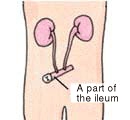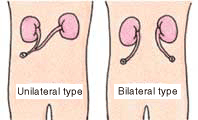Basic knowledge
Managing a stoma effectively and ensuring a comfortable life
A stoma is created to overcome disease or injury.
Ostomates often feel anxiety and embarrassment because of the change of excretion route but they are encouraged to gain the basic knowledge and learn useful care techniques to ensure a comfortable life as soon as possible.

What is a stoma?
A stoma, which means "orifice" in Greek, is an artificial opening constructed between a hollow organ such as the intestine or ureter and the outside of the body to permit the passage of stool or urine, and, depending on its function, is called either an artificial anus or an artificial urinary bladder. The stoma size and shape varies from ostomate to ostomate and the red mucous surface must be kept moist all the time. An ostomate with a stoma cannot consciously control their excretion because of the absence of nerves and sphincter muscles to regulate excretion from the stoma. If the ostomate uses an appliance that is suited to his/her stoma and performs appropriate stoma care, he/she can achieve a comfortable daily life.
Types of stoma
Stomas are classified into two types: digestive stomas, which permit the passage of stool, and urinary stomas, that permit the passage of urine.
Digestive stoma
In digestive stomas, the length of the intestine to be resected and stool type are determined by the part of the intestinal tract to be used for the stoma and its location.
Colostomy
-
Ascending colonic stoma
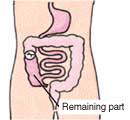
Watery to muddy stool
-
Transverse colonic stoma
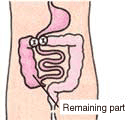
Muddy to soft stool
-
Descending colonic stoma
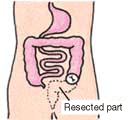
Soft to solid stool
Ileostomy
-
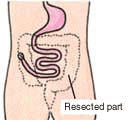
Watery stool(ordinary case)
Bowel control using digestive stoma
Spontaneous evacuation of stool
The stoma appliance is applied on the abdomen such that the stool evacuated from the stoma can be collected in the appliance. This basic evacuation technique is applicable to all types of stoma, and individuals with limited physical strength can control bowel movement without difficulty.
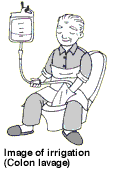
Evacuation by irrigation (Colon lavage)
- Doctor's approval needed.
As in the case of an enema, a lukewarm water is injected into the intestine through the stoma to wash out the stool. This technique, which was developed for the ostomates who had undergone descending/sigmoid colostomy, requires regular irrigation once a day or every other day but requires no removal of stool except as irrigation, and reduces gas (flatulence). Because it takes some time to complete all the necessary procedures in a private space with special appliances, the ostomates need sufficient physical strength and appropriate professional support and advice, including doctors' approval and guidance from nurses or ETs.
Urinary stoma
At what point the urine is diverted determine the location and size of the urinary stoma.
Ileal ConduitIleal Conduit
A part of the ileum is used to construct a stoma. In addition to urine, mucus may be secreted.
Ileal Conduit
The ureter is used to construct the stoma. A catheter is occasionally inserted.
Percutaneous Nephrostomy
A catheter is inserted directly into the renal pelvis, allowing continuous urination.
Percutaneous Cystostomy
A catheter is placed above the pubic bone so that it can be inserted into the urinary bladder. In some cases, a catheter is unnecessary and urine can be discharged directly.



